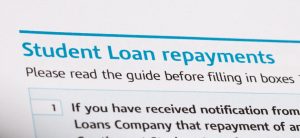
Student loans. The faintest whisper of those words will make a millennial wince — and with good reason. In June, there were over 44 million student loan borrowers who owed a staggering $1.52 trillion in the United States. However, millennials are not alone in carrying substantial student debt. Americans aged 30 to 39 carried the most amount in 2017: $461 billion.
For the average college graduate who holds $37,000 in debt, the prospect of paying of paying off their student loans may seem impossible. However, the office of Federal Student Aid provides a variety of resources graduates can use to quell their fears and start planning around their debt.
As a function of the U.S. Department of Education, the office of Federal Student Aid outlines an assortment of repayment plans offered by the U.S government. You can learn more about these plans at studentaid.ed.gov.
There are eight main plans for individuals with direct federal loans or Federal Family Education Loans (FFEL) Program loans. These vary based on an individual’s eligibility, the time frame of the plan, and the monthly payments required. It’s important to familiarize yourself with the details of the plans so you can decide which one works best for you.
Standard Repayment Plan
The standard repayment plan is the default plan for all college graduates. According to this plan, graduates will pay a fixed monthly amount of at least $50 for up to 10 years. This time frame is extended to up to 30 years for consolidation loans.
This plan is best for graduates who can afford high monthly payments. By paying off your loans over the relatively short period of 10 years, you’ll pay less interest than you would with other plans of longer time frames.
Graduated Repayment Plan
The graduated plan is designed for those who have a low income at present but expect it to steadily rise. Your payments under this plan will start low but increase every two years over a 10-year period (except for consolidation loans, which can go up to 30 years). Your payments will never be less than the amount of interest that accrues between payments and will also never be more than three times any of your other payments.
While the graduated plan allows you to start with lower payments, it also means you will pay more interest over a 10-year period than you would with the standard plan.
Extended Repayment Plan
The extended repayment plan is similar to the standard plan and the graduated plan in that you can make either fixed or graduated payments, however it differs in that you can pay off the loan over 25 years.
To be eligible for this plan, you must have more than $30,000 in direct loan or FFEL loan debt. Because of the extended time period, you will pay lower monthly payments, but you will also pay more in interest over time.
Income-based Repayment Plans
While the above plans offer some choice about how you can pay your loans back, they may also be unrealistic for individuals with lower income and high debt. However, there are other alternatives. The federal government also offers income-based repayment plans to provide some relief to individuals who qualify. There are five plans under the income-based Repayment plan label: Pay As You Earn Repayment Plan, Revised Pay As You Earn Repayment Plan, Income-based Repayment Plan, Income-Contingent Repayment Plan and Income-Sensitive Repayment Plan.
You may be thinking that all these plans sound pretty similar, and you’d be right, but there are important differences. I’ll discuss these income-based repayment plans next time, so stay tuned.
If you thought this post was helpful, subscribe to our blog on the right-hand side of the page. For more content, follow NEXT Financial Group, Inc. on Facebook and LinkedIn.
https://studentaid.ed.gov/sa/repay-loans/understand/plans
Neither NEXT Financial Group, Inc. nor its Representatives give tax or legal advice.






